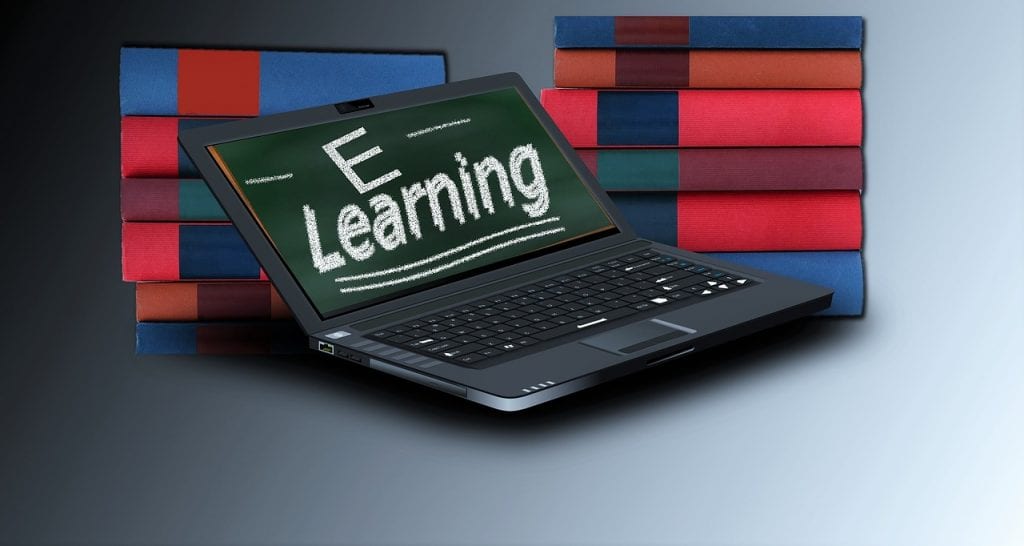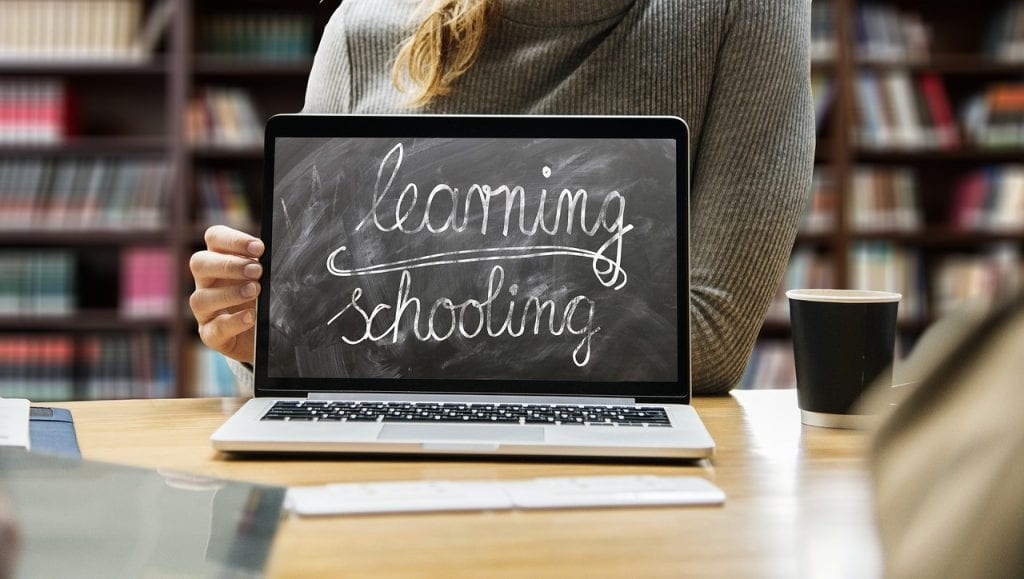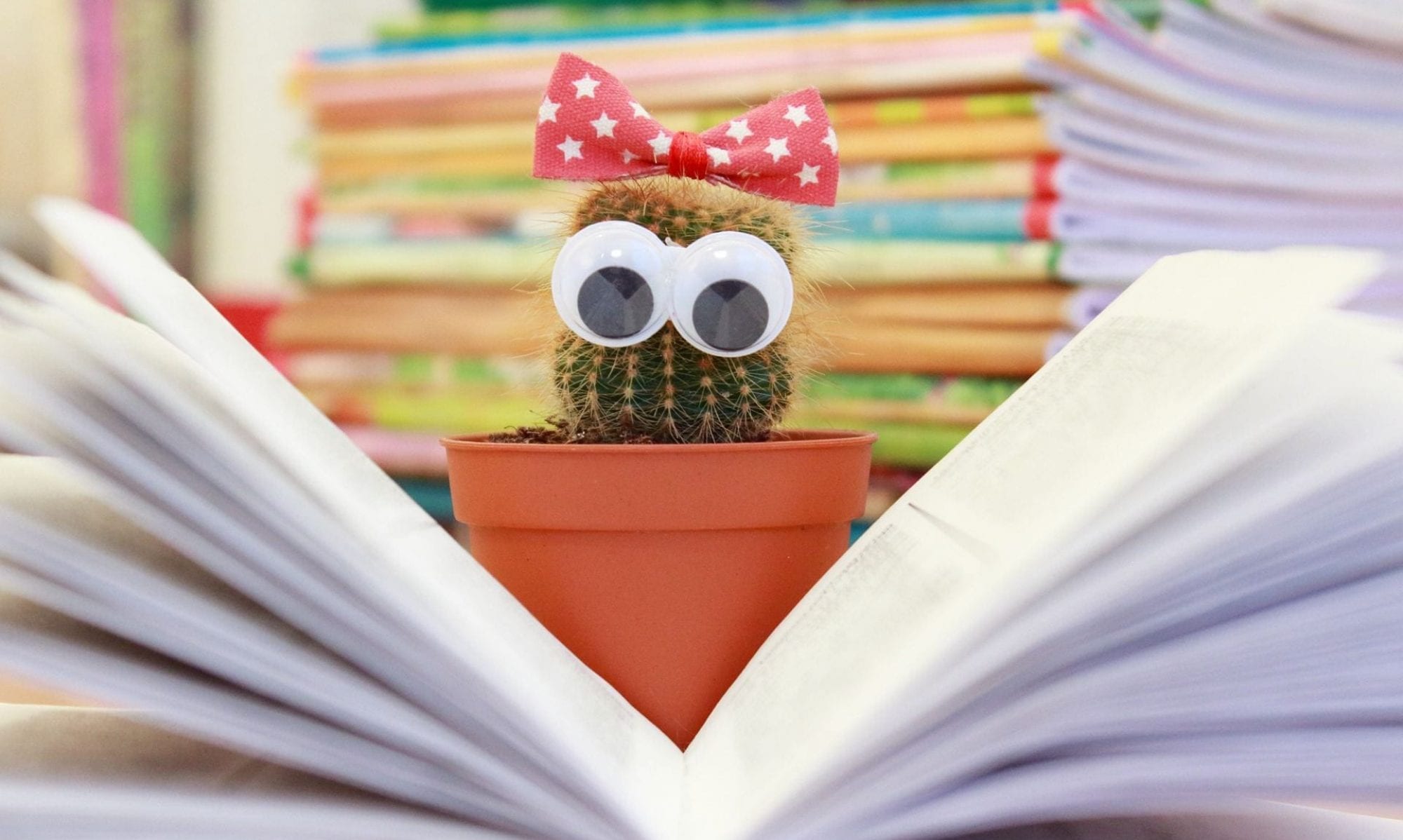I would use the ASLA Evidence Guides for Teacher Librarians as a benchmark for TL achievement. They provide a non-exhaustive list of practical ways to meet each of the AITSL Teacher Standards through a TL position. I use the documents to inform my practice with the examples provided for whichever standard I am trying to address. They are also useful as a basis to further explore the role – again through reviewing the examples provided. Comparing the proficient document to the highly-accomplished document could provide ideas about how I might need to lift my gain to achieve that level.
Re-defining Literacy
Literacy: the ability to read and write, competence or knowledge in a specified area.
I think the definition of literacy is very broad and can encompass a range of different skill sets. As mentioned in the video ‘What does it mean to be literate in the 21st century?’ there is basic/traditional literacy (reading and writing), critical and visual, aural, world, information social, and outdoor literacy (not an exhaustive list!). The availability of technology means that students require more advanced skills to become literate in these areas.
‘Competence of knowledge in a specified area’ is the definition of literacy that can be applied to information and digital literacy. Students need to develop competence/knowledge and skills in multiple literacies to be fully functioning 21st century citizens.
The increase of inquiry learning and technology use in the classroom means students are potentially provided with a wealth of opportunities to develop their information and digital literacy skills. A consistent approach to teaching these skills is necessary to assist students in transferring their knowledge between subject areas.
Blog Reflection
For the third blog for this topic (INF530) I provided a reflection comment for Emily’s post on technology trends.
This was my response:
Hi Emily, thanks for your post. I would like to reflect on your discussion of digital literacy.
In my view, digital literacy encompasses information literacy. There is a focus on locating, evaluating, and using information from digital platforms. Digital literacy is particularly important in the information environment we live in; locating information which meets the user’s need and evaluating it for accuracy and relevance are integral 21st Century Skills.
There are links between digital literacy, information behaviour, 21st Century skills and lifelong learning. Bawden and Robinson’s (2012) discussion of cognitive models of information behaviour and information search processes highlights the differences in how people go about finding information. With my TL hat on I see information search models (guided inquiry, project-based learning) as a platform for integrating the teaching of digital literacy skills. The development of digital literacy skills in students is dependent on the opportunities to learn and practice. These are skills which need to become second nature to students.
Your discussion of teaching skills to interpret information has strong connections to the readings from module 3.1. It brought to mind Brabazon’s (2009) discussion about what digital natives thought they should be learning. One respondent mentioned several times we should be teaching them how to learn (p.177, 180). Conole (2012) agrees with this sentiment stating, ‘learners need to develop strategies for finding and validating appropriate resources’ (p.55).
In my opinion, the focus of the Australian Curriculum should be the General Capabilities. They are the Australian Curriculum, Assessment and Reporting Authority’s (n.d.) take on 21st Century learning skills and provide a checklist for students to show application and understanding of skills relevant to their futures. Digital and Information literacy fit into Critical and Creative Thinking and ICT Capability. As such, integration of the General Capabilities into teaching and learning covers elements of digital literacy and information literacy and assists in the development of lifelong learning skills.
Although students of today may have more screen time and access to more technologies than students used to, it is not right to assume they have the knowledge and skills to effectively and efficiently traverse the information landscape to achieve their goals. Conole (2012) states that ‘many learners, despite being competent technology users, lack the appropriate academic literacy skills to appropriate these free resources for their learning’ (p.52). Brabazon (2009) and Conole (2012) highlight that effective use of digital tools and resources relies upon development of skills in teachers and students (p.181 & p.51).
Schools with trained TLs have resources available to them to assist with skill development of both teacher and student. When classroom teachers work collaboratively with TLs, a range of opportunities for the teaching and application of digital and information literacy skills arise. Through inquiry learning students can develop these skills in context, and hopefully see the connections to future tasks.
References
Australian Curriculum, Assessment and Reporting Authority. (n.d.). General Capabilities. Retrieved from https://australiancurriculum.edu.au/f-10-curriculum/general-capabilities/
Bawden, D. & Robinson, L. (2012). Introduction to information science [London: Facet]. Retrieved from https://ebookcentral.proquest.com/lib/csuau/detail.action?docID=2076216
Brabazon, T., Dear, Z., Greene, G., & Purdy, A. (2009). Why the Google generation will not speak: The Invention of digital natives. Nebula, 6(1), p.163-180. Retrieved from http://www.nobleworld.biz/images/BDGP.pdf
Conole, G. (2012). Designing for learning in an open world (Vol. 4) [Springer]. Retrieved from https://ebookcentral.proquest.com/lib/csuau/reader.action?docID=1030803
Information Literacy
My interpretation of information literacy encompasses the development of skills to engage and interact with, and create new understandings from information, and to learn how to learn in an ever changing 21st Century, global information landscape.
I strongly agree with the arguments from this module (ETL401 – module 5.2) around context and purpose being important to information literacy instruction. I have experienced that integrated IL lessons have higher levels of student engagement than stand-alone lessons, as students can see a connection between IL skills and other curriculum tasks.
Take-aways from IL discussion into my IL role include:
- Have a focus on context and purpose when preparing IL learning opportunities
- Identify Information Literacy skills graduates should have
- Have opportunities to work collaboratively to identify cross-curriculum IL opportunities
Are school librarians an endangered species?
No, school librarians are NOT an endangered species.
The key point from Karen Bonanno’s 2011 ASLA speech was to see the glass half full, have your rhetoric resonate with your audience and put the 5-finger plan in place. By doing these things the school librarian can integrate themselves and remain relevant. She highlights maintaining a single focus until it is achieved and finding a way to connect our skills and expertise with the audience and curriculum. Bonanno’s 2015 paper continues this theme by focusing on remaining relevant by aligning goals of the library with the whole school strategic direction. She also highlights here having evidence and data to back up what you do is ‘necessary for the future sustainability of the profession’ (Bonanno, 2015 p19).
By integrating into the inner workings of the school and aligning what we do with the school strategic direction TLs make themselves invaluable to schools.
References
Australian School Library Association (ASLA) (2011). A profession at the tipping point: Time to change the game plan. Keynote presentation, Karen Bonanno . Retrieved from https :// vimeo .com/31003940
Bonanno, K. (2015). A profession at the tipping point (revisited). Access, 29(1), 14-21. Retrieved from https://search-informit-com-au.ezproxy.csu.edu.au/documentSummary;dn=064399679084070;res=IELHSS
Trends in Technology Developments

Recent trends in educational technology developments are varied. Ranging from transformation to 1:1 device schools, to integration of emerging technologies into teaching and learning.
Digital conversion is important in the discussion of technology developments (Project Tomorrow, 2013). It can occur incrementally via individual classes and teachers or a whole school project. In the incremental adoption, the Teacher-Librarian assists teachers in building their skills to create ‘individualised digital conversions’ (Project Tomorrow, 2013, p.1). Whole school digital conversion transforms teaching and learning, and communication with the community (Project Tomorrow, 2013, p.1).
Teacher access to, and experience with, emerging technologies is likely to boost their interest and skills in digital learning and the scope of tools for classroom integration (Project Tomorrow, 2013). According to From chalkboards to tablets: The digital conversion of the K-12 classroom, teachers want to develop skills in emerging technologies to facilitate differentiation and personalisation of learning opportunities (Project Tomorrow, 2013, p.16). We know that students adopt and adapt technologies daily, (Project Tomorrow, 2013, p.1). Teachers need to continue integrating these technologies to support deeper learning approaches (Freeman, Adams Becker, Cummins, Davis, & Hall Giesinger, 2017, p.14).
The NMC/CoSN Horizon Report: 2017 K-12 edition refers to ‘Advancing Cultures of Innovation’ (Freeman et al., 2017, p.12) and ‘Deeper Learning Approaches’ (2017, p.14) as a requirement for driving technology adoption in the long term. This includes focusing on teaching strategies, integrating prior learning, using tools and apps to support deeper learning, and enhancing Project Based Learning with technology to create a flipped classroom environment (Project Tomorrow, 2013, p.14, 16).
Specific emerging technological trends and their importance in education include Maker Spaces, Robotics, Virtual Reality and the Internet of Things. The NMC/CoSN Horizon Report: 2017 K-12 edition (Freeman et al., 2017) refers to these trends varying from short term to long term implementation.
Maker Spaces emphasize hands on and deep learning through technological tools (Freeman et al., 2017, p.40), providing opportunities to focus on higher order thinking, problem solving, and experimentation. They are often seen in an environment which nurtures creativity and collaboration and promotes individual and peer-peer learning (Freeman et al., 2017, p.41).
Robotics promotes critical and computational thinking, and coding. These skills aid students to develop resilience, collaboration and assessment of risks (Freeman et al., 2017, p.42). Robotics can promote engagement through a program called ‘TeachAssist’ which can provide interactive content, and track student progress (Freeman et al., 2017, p.42).
Virtual Reality provides computer generated environments to simulate the presence of physical items and provide realistic sensory experiences. They provide authentic learning experiences beyond STEM classes; increasing engagement and enabling experiential learning, or experiencing abstract concepts (Freeman et al., 2017, p.46-47).
Internet of Things refers to objects which have computing power and ability to transmit information over networks (Freeman et al., 2017, p.50). Within a school environment there are privacy and security considerations to be addressed, particularly if implementing Smart student ID cards (Freeman et al., 2017, p.50). These could track movements and interactions of students.
Technology will continue to change. Over 2009-2017 the Horizon K-12 Reports identify changes in the long-, middle- and short-term trends. Understanding technological developments is necessary to maintain engagement and development of 21st Century classroom skills. Teacher understanding of apps and tools to assist with student centred deep learning opportunities is also integral.
References:
Project Tomorrow. (2013). From chalkboards to tablets: The digital conversion of the K-12 classroom. Retrieved from https://tomorrow.org/speakup/pdfs/SU12EducatorsandParents.pdf
Freeman, A., Adams Becker, S., Cummins, M., Davis, A., & Hall Giesinger, C. (2017). NMC/CoSN Horizon Report: 2017 K-12 edition. Retrieved from https://cdn.nmc.org/media/2017-nmc-cosn-horizon-report-k12-EN.pdf
Understanding concepts and practices in a digital age

Learning Context:
I am undertaking this course to further develop my information and digital skills for use in a teacher-librarianship role. I am interested in understanding current and emerging digital technologies/platforms which may broaden students use of information, technology, and collaboration within their learning. I wouldn’t define myself as a ‘big’ technology user, I mainly use it (phone, tablet, laptop) for internet searches and document processing, and the occasional eBook. I usually handwrite notes and tasks before typing assignments/unit plans and reading from hard-copies. I find it easier to think and absorb information that way. A challenge for me in this subject will be using different online networking and productivity tools to achieve the same goals.
Knowledge and Understanding:
From the module content so far my understanding of concepts and practices in a digital age has definitely expanded. My prior knowledge was limited to using technology in the classroom for engagement, research, and publishing (IWB and 1:1 devices), and the TPACK model discussed at uni.
I understand better now how technology has changed over time and the impacts that has had (and will have) on education. When I was going through school computers were used for research, publishing and emails. Even in the last 12 years things have changed considerably. Now there are social platforms that can be used to enhance learning and collaboration. There is a need for the educator to understand how learning can be connected within a multi-platform and multi-media environment, and to understand which tools are best for the job.
All around the world people are connected and learning via some sort of social or collaborative tool. This relates to the idea of the ‘Global One Room School House’ and the reciprocal teaching of those involved. I think the possibilities of this type of learning are great. We can now connect to people in different countries and learn directly about different cultures. But these sorts of tools need to be explored for their potential to truly be reached.
There is a wealth of knowledge readily available through the internet now. A concept integral to effective student learning in a digital age is knowing what skills students need to progress and how to teach them. ‘Rethinking Learning: 21st Century Learner’ discussed the need for 21st century learners to have connections and environments to enhance discussions and learning. They also need play based skills – creativity, engagement and social. I can see the how inquiry topics can integrate both sets of sills and help students develop them for the future.
I understand the importance for all users of technology to have at least a basic understanding of digital literacy. I agree with many points in Bawden’s chapter on digital literacy, particularly the role of digital literacy as an integration tool to encompass multiple forms of literacy. I see the connections between the various types of literacy and particularly notice the link to research skills and media literacy. Digital literacy is another important concept in the digital age as it assists with the understanding and use of information within a digital environment.
I am already seeing a wealth of connections between concepts and practices in the digital age and how they may relate to my role as a teacher-librarian.
Teacher-Librarians do what now..?

I have always been interested in working in a school library. Following the completion of my Bachelors degree I undertook a Grad. Dip. of Library and Information Management, as I thought it would be interesting and give me something to do while waiting for work opportunities to come up. It was. It gave me experiences in a librarian’s role and the administrative side of things. Prior to this, my experience of teacher-librarians was limited to my schooling and my practicums.
My first picture of what a teacher-librarian’s role included was in primary school. I thought it was about buying books, helping students to find books that interested them, and hosting authors/illustrators, and Book Week. It always seemed like an interesting job and being able to be around books all day was a great idea to me.
During my practicums my view of the teacher-librarian role expanded. I went to library lessons and observed how the teacher-librarian worked with classes and helped teachers locate resources. They created book boxes for areas of research, assisted students in borrowing for interests, and helped hook students into research topics.
As my experiences with school libraries changed, my understandings of the role of teacher librarians has developed. During my first contract in a teacher-librarian role I came across the School Library Association of South Australia’s (SLASA) Teacher Librarian Role Statement (2015). This really opened my eyes as to how much a teacher-librarian does!
Now, after 3 ½ years in teacher-librarian positions my understanding of the role is of an information professional that is involved in all areas of the school – providing access points for information literacy skills and literature promotion. Information literacy skills are integral to developing students who can locate and critically evaluate information in the 21st century.
Teacher-librarians are information skills advocates.
This includes defining questions, locating resources, searching online effectively and taking notes, summarising information, referencing correctly, and developing critical thinking skills. They find opportunities for inquiry learning.
Teacher-librarians are resource advocates.
They curate and provide access to a variety of up to date and relevant sources for teaching and learning. They need to integrate their way into subject areas and tailor their presentations/resources for specific needs. The teacher-librarian is a resource that is there to be used. They are experts in their field.
Teacher-librarians are literacy advocates.
They help students locate resources suited to their ability and their interests. They introduce students to books they may not have seen previously. They provide access to resources for all users. They promote interest and challenge in reading.
Teacher-librarians are collaboration advocates.
They work together with class and subject teachers to create meaningful opportunities for inquiry learning and development of information skills.
I have enjoyed being a teacher-librarian in the positions I have been employed in. I believe these roles/jobs of the teacher-librarian are intertwined and often overlap. There is a big change from what I thought teacher-librarians did to what I now realise is part of the role. This has not changed my interest in the role. I see the role as very important in developing information literate students for the future.
About Me
My name is Deborah, I am starting my Master in Education (Knowledge Networks and Digital Innovation) with Teacher-Librarianship electives.
This is my third degree. I have my BEd(R-7)/BA, and Grad. Dip. Library and Information Studies. I have been working in a Riverland SA high school as Teacher-Librarian/English/History for the last two years, and in an Adelaide Hills primary school as Teacher-Librarian before that.
Through this degree I hope to expand my knowledge and application of information & digital literacy tools/skills, and explore the Teacher-Librarian role further.
Hello world!
Welcome to your brand new blog at CSU Thinkspace .
For Guides to getting started check out:
For support visit: http://thinkspace.csu.edu.au/support/.

